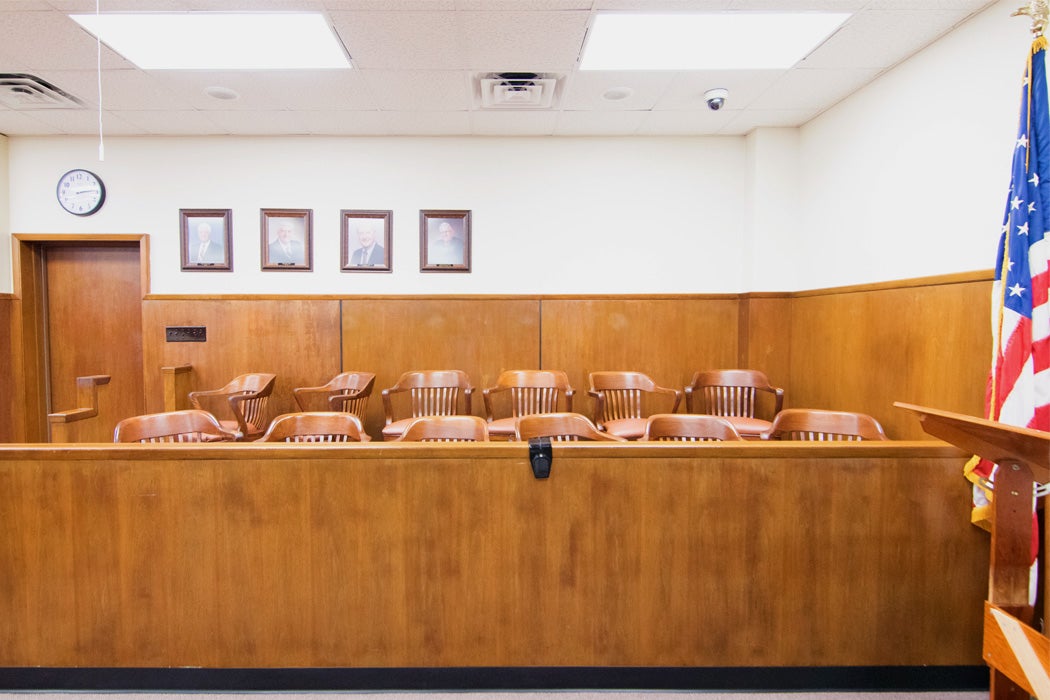The jury certainly has come a long way since its eleventh-century iteration in England. In those days, a jury was a smattering of local powerbrokers tasked with compiling data for the Domesday Book, William the Conqueror’s census of taxable property. These men were essentially witnesses of the local property scene, sent out to count the plows.
Legal scholars Stephan Landsman and James F. Holderman note that a century later, Henry II decided to put such groups to work resolving matters in dispute. Since earlier methods of resolving such disputes were legally sanctioned duels, various painful and humiliating ordeals, and even “swearing contests,” this innovative new use for juries was largely welcomed.
As Landsman and Holderman write, the history of juries is actually quite revolutionary. By the late seventeenth century, juries—mostly made up of men of the “middle rank”—were less witnesses than a bulwark against the “Stuart kings [who] tried to impose absolute monarchy and government officials [who] sought to control religious and political speech.” In a famed 1670 case, for instance, jurors refused to convict Quakers William Penn and William Mead of unlawful assembly. The judge was so incensed that he fined the jurors, and imprisoned those who didn’t pay the fine. A chief justice had to be petitioned to free the jurors. This set the precedent that jurors could not be punished for decisions, unless they were corrupt.
English colonists brought these practices across the Atlantic. In a famous 1734 trial in New York, a jury refused to convict publisher John Peter Zenger for printing the truth about the colony’s royal governor. “Not only did the jury decision in Zenger’s case transform libel law (truth became a recognized defense), but also it bespoke a politically energized jury that decided cases as it saw fit rather than at the direction of royal judges and government prosecutors,” Landsman and Holderman write. Colonial juries became so unruly in the lead up to the American Revolution that the Crown sought ways to sidestep them completely.
Lawyer Arie M. Rubenstein writes that a jury’s refusal to convict regardless of the law is called jury nullification. The practice was pretty quickly suppressed once the United States was established. Through the nineteenth century and early twentieth centuries, the use of juries came under attack from several fronts. Juries were used less and less often. (In England, civil cases stopped using juries in 1930; manpower shortage in WWI had set a precedent for not having them.)
Get Our Newsletter
But, as Landsman and Holderman note, juries have made something of a comeback in recent years. They applaud this resurgence of jury trials, noting many benefits:
…protecting the weak from the powerful and the poor from the wealthy, proving a means to curb the unconscious and inescapable biases of officials, securing the views of the community on a wide range of issues, schooling the citizenry in the obligations and importance of governance, and many other reasons besides.
Meanwhile, especially in the past fifty years, the “body of persons” sitting on a jury has become far more representative of communities. Reforms at state and federal level have attempted to make jury service less onerous, even more inclusive, quicker, and compensated. The authors conclude, “It is hoped that this evolution will lead to enhanced juror understanding and, in the process, serve to preserve and enhance the protections the American institution of jury trials provides to our democratic society.”







